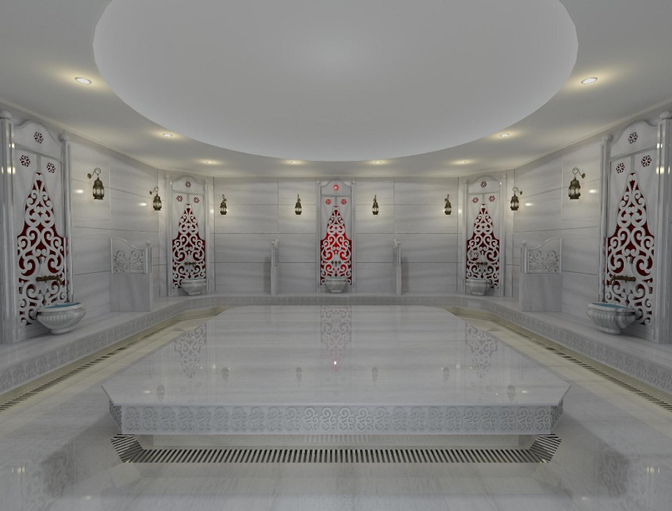Turkısh Bath
TURKISH BATH
The hammam is a building for washing, with hot and cold water heated by a special layout. The history of the bath dates back to the Ancient Romans. Excavations in the city of Pompeii, which was left under ashes after the eruption of the volcano Vezuv,
He uncovered the bathhouses used by the Romans. It is understood these baths are not made for cleaning alone, but for pleasure and fun. Because there was a Class difference in the Romans, slaves and nobles' entrance gates and washing places were separated in the baths. The Roman baths also had a steam bath place, cold and hot water pools
In the life of Turks, bathhouses have not only been a place of washing, but more often they have been centres of health, social and cultural activities.
One of mankind's vital requirements, the use of water for health purposes, has led to the construction of water places such as hammams and hot springs. One of these types of structures, baths, respond specifically to people's needs to be washed and cleaned. Besides this, baths have demonstrated architectural shaping in line with the religious beliefs of societies during each period and have become part of social lives.
The pouch foam massage technique most commonly used in the bath, an ancient Turkish tradition, is an effective method for your skin to freshen up and get a healthy look, free of all dead cells. Over time it becomes harder for your skin to get air with dirt, sweat-inducing factors. Closing pores is inevitable for different reasons, both in winter and summer. With pores closing, not enough cleaning can be achieved with a routine shower and bath, and the impact of the care you do is wasted. In pouch foam massage, the goal is to open pores throughout the body, removing them from the dead skin found at the top of the skin layer and restoring them to their former healthy state.



